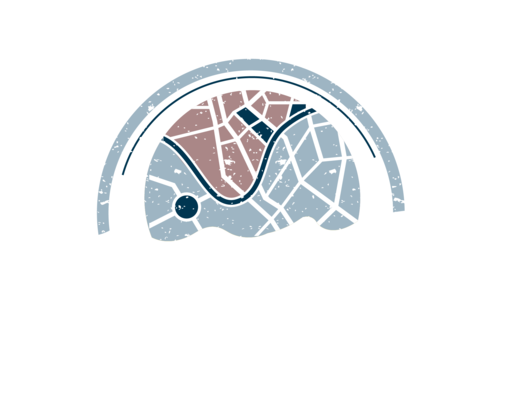“It would be of some relevance to notice that the appeal to thought arose in the odd in-between period which sometimes inserts itself into historical time when not only the later historians but the actors and witnesses, the living themselves, become aware of an interval in time which is altogether determined by things that are no longer and by things that are not yet. In history, these intervals have shown more than once that they may contain the moment of truth.”
-Hannah Arendt, Between Past and Future
This short book and online project represents work underway well before the Trump era began, and it projects a politics that will inevitably go well beyond the Trump Presidency. Its premise is that we have entered what is best understood as an unusual form of systemic crisis, not simply a political crisis. Which is to say the larger system of America’s form of corporate capitalism is in trouble, not simply its political system. Long, long trends of growing inequality, of poverty, of institutional racism, of ecological destruction—trends that do not bend in more than token ways to the politics of reform—these define problems that have their origins much deeper in the political-economic design of the system itself.
It is instructive also to remember that the fourteen-year period which preceded the advent of the New Deal began with the “Red Scare,” one of the greatest eras of political repression in American history, and that it continued through the deeply conservative presidencies of Warren G. Harding, Calvin Coolidge, and Herbert Hoover. Even so, many of the programs and ideas that became the basis of the next stage of progressive development were refined in the state and local laboratories of democracy during this challenging period, as in many ways were its larger political theory and vision.
What defines the current crisis as different from those of the past, and unusual, is that the system neither succeeds in meeting the needs and aspirations of countless Americans, nor collapses, as theorized by some analysts.1
Rather it breeds pain, decay, disillusionment—but also, potentially, the basis of a different longer term politics, one that I shall suggest is ultimately likely to develop steadily in and through the Trump era, establishing the basis of something far more transformative beyond.
To say as much is to define two critical but distinct challenges. The first is straightforward, though bracing: if the design of corporate capitalism is unable to sustain values of equality, genuine democracy, liberty, and ecological sustainability as a matter of inherent systemic architecture, what systemic ‘design’ might ultimately achieve and sustain these values? (Especially given the total failure of the traditional twentieth century alternative, state socialism.)
The second challenge is equally demanding: How specifically might it be possible to move forward, especially in difficult political times, to lay foundations for a transformation in the direction of a serious new systemic answer?
Presented here in summary form some of the answers to both problems that I have been attempting to develop over a number of years. The ‘systemic design’ it offers, as will shortly become clear, may in part be thought of as a particular bringing together of several new institutional directions now developing in many parts of the country just below the surface of most media reporting. The development of such institutions, especially locally, I will urge, simultaneously offers the possibility of establishing a new institutional basis for a serious longer term transformative politics.
I will have a good deal more to say about both challenges in the entries that follow, but the importance of a new institutional basis for progressive politics (and ultimately for a transformative vision) is critical. Calls for a “new populism” are commonly heard among many progressives, but often what is mainly meant is a more demanding, aggressive style of politics. What is often forgotten is that historically populism was anchored in two quite distinct institutions—the small farm (and angry farmers) under pressure and a rising mix of radical and semi-radical labor unions. Modern liberalism, in turn, depended foundationally on strong, if less radical, unions, as did social democracy throughout Europe.
The small farm institutional substructure of populism has long since disappeared. Farmers represent no more than two percent of the population.2 And labor unions as the institutional substructure of liberalism (and of progressive politics in general) have declined from a peak of 34.7 percent of the labor force shortly after World War II3 to a mere 10.7 percent at this writing (6.4 percent in the private sector), and falling.4
Institutions matter. They also provide a context, locally, which allows and nurtures the sustained development of an alternative political culture. Unions, historian Michael Kazin observes, “give their members (or audience) a community in which to learn about politics and discuss ways to tilt the world in a progressive direction.”5
Without institutional connections, individuals swim in a lonely political sea, ready to be preyed upon by the likes of Trump. They also are a critical form of underlying political power—which is why conservatives from Ronald Reagan to Wisconsin Governor Scott Walker have worked to undermine them.
One of the central observations of the following essay is that a broad range of new institutions is quietly developing just below the surface of most political reporting. Among the forms are new cooperatives, neighborhood corporations, land trusts, municipally owned energy and broadband systems, hybrid forms of community and worker ownership, and many more. I shall suggest that these and larger forms based upon them are important both as defining elements of a next system beyond traditional capitalism and traditional socialism, and at the same time, as key institutional power elements of the substructure of what may become a new politics of progressive systemic transformation within, and throughout, the Trump era, laying foundations both institutionally and in the critical realm of theory and vision, for the potential community-sustaining next system beyond it.
From Ferguson to Flint, it’s clear from thousands of broken communities across the country that the current American system is troubled and challenged at its very core. The wind of history is no longer at our backs. Confident narratives of progress and equality are giving way to the triage demands of austerity, muddling through from one crisis to the next, with each “recovery” lowering the expectations of the next generation while the wealth at the top continues to concentrate.
At the same time, new and increasingly energized movements are afoot. Black Lives Matter, climate change activists, the Fight for $15, reproductive rights activists, a growing anti-war and anti-nuclear movement, transgender equality struggles—these and many other developing efforts recall the early days of other movements in American history that ultimately built triumphant power. At another level entirely, millions of Americans voted for a self-described Democratic Socialist for president—shattering the myth that nothing fundamentally different in political aspiration could ever be taken seriously in the United States.
At such a moment in history, people in many parts of the country are searching for some alternative to the current system—haltingly, unsure, deprived of the resources an intellectual culture that took political economy seriously might provide. But we see, especially among the young, an increasing disdain for the permissible limits established by our narrow and unimaginative national political culture. As someone who grew up in the shadow of Joseph McCarthy, hearing the word “socialism” in the context of an American election remains startling—even if it is so far being used only to describe a slightly-left of center social democratic vision that’s painfully reaching its limits on the other side of the Atlantic.
The opening of the system question is being driven as much by despair as it is by idealism—the speculative force of the American dream, in which each generation could count on a brighter future for the one it was raising, has crumbled, hemmed in by failed cities, mass incarceration, precarious low-wage work, and the looming threat of ecological collapse. Dispossession, deindustrialization, and disinvestment have created a geography of inequality and diminished expectations, in which it is all too painfully obvious that the old solutions will be insufficient.
Ever increasing invasions of privacy and personal liberty, along with repeated wars of questionable intent and dubious authorization, have also deepened awareness that the challenge is no longer merely electoral or political in the narrow meaning of those terms. Simply electing one group of politicians to replace another is unlikely to alter the long-term trends and decaying patterns.
It is clearly time to get serious both about a different vision for the future and—critically—something far more sophisticated about what a meaningful “systemic design” would entail. We need to go beyond rhetoric about a broken system to a critical and informed understanding of how a real systemic alternative might actually work. If the challenge facing the next generation and the generation after them, is to tackle the unavoidable work of transforming the most powerful political-economic system in the world in the direction of greater liberty, equality, and sustainability, then it is crucial that we are equipped with the intellectual tools allowing us to undertake this historical mission with something more than quixotic and spontaneous reaction.
What follows is an attempt to do just that. It is a sketch of an alternative political-economic system design—“the Pluralist Commonwealth” (along with concrete stepping stones in its direction)—toward which I have been working in various essays, books, and other publications going back to the 1960s. The core idea is simple and straightforward. The individuals and corporations who own and control wealth have far more power over any system than those who don’t. In a nation in which a mere 400 people own more wealth than the bottom 61 percent of the U.S. population or 194 million people, the point should be obvious.6 What is new in our time in history is that the traditional compromise positions—namely progressive, social democratic, or liberal politics—have lost their capacity to offset such power even in the modest ways the American welfare state once did. At its heart, the Pluralist Commonwealth is a way to think about a different system for the ownership of the economic institutions underlying our society, one which is constructed to secure far better outcomes than seem possible in a system characterized and determined by increasingly concentrated private wealth. Contrary to both the corporate capitalist vision—which lifts up private ownership above all else—and the state socialist vision—which focuses on bureaucratic, centralized forms of public ownership—this is a fundamentally pluralist vision, in which multiple forms of public, private, cooperative, and common ownership are structured at different scales and in different sectors to create the kind of future we want to see. The vision begins and ends with the challenge of community. If it does not meet the test of everyday life in the communities in which we Americans live, it does not meet the test of serious long term change.
Changing ownership, by itself, is clearly not enough. Ownership is the major determinant of systemic outcomes, but real democracy—economic and political—requires attendant forms of transformed governance, institutional development, and cultural mobilization in order to be sustained. It also requires changing the underlying economic dynamic—away from expansion and growth as inevitable. The Pluralist Commonwealth, as we shall explore, is thus a bundle of related and mutually reinforcing strategies, intended to provide the basis of a new society—and to engender discussion of further, even more refined variations
To raise the system question is to underscore the generative role that the specific design of institutions—both existing and potential—plays. In the long term, it’s not electoral contingency or individual charismatic leaders that shape or constrain our present and future—it’s the basic structure of the underlying institutions, especially the economic ones. The root of our current systemic crisis lies in the outcomes programmed into it at an institutional level, making the truly important question whether our proposed alternative systemic model can inherently generate outcomes that do not require “pasted on,” after-the-fact policy fixes (or attempted fixes) it is hoped that the political system will somehow supply. Such “fixes” come out of a larger culture, the terms of reference of which are significantly set by the underlying economic institutions. If these economic institutions develop competitive and growth oriented attitudes (and political power), the outcomes are likely to be different from those hoped for by progressive proponents.
But not always. In times of crisis and manifest systemic failure, new ideas about new institutions can have an outsized effect in shifting the course of history, especially if prior on-the-ground development work has set the stage for real change. We live at a time when the dominant institutions of corporate capitalism have come under question, one in which a democratic socialist candidate came very close to becoming the nominee of the Democratic Party, and a time when millions of Americans sense that something is fundamentally wrong with the way the current system operates.
Such a time, our time—the prehistory of potentially transformative and fundamental change—demands a serious discussion of long term processes of change, experimentation, political organizing and the steady development of both power and ideas. None of the existing “models” of possible systemic change offer answers to all the questions. And none of the existing strategies of change offer a refined and commanding approach to change. The approach outlined here offers a suggested trajectory and pattern for steadily developing democratized institutional change—one that moves beyond both corporate capitalism and traditional state socialism. It is a model that can be and must be refined, but one that I hope suggests key elements of a viable longer term direction, along with practical ways to build, step by step in a new direction. Although an essential judgment is that a new strategy of building institutions, politics, culture and power from the bottom up is both possible and important—the only way, ultimately, to ground meaningful democratic and participatory power—the approach also welcomes traditional legislative improvement whenever possible. It also recognizes the possibility of particular break-through moments of potential national political rupture and moments of explosive change.
That said, it is also clear that truly fundamental change is all but certain to be strongly opposed, even possibly violently repressed. This challenge, too, must ultimately be faced. The judgment underlying the following discussion is that whatever form change ultimately takes (and hopefully it will remain peaceful) a clear and well-thought out vision is absolutely essential, along with concrete building blocks that steadily move from vision to practical expression.
In all of this, it is important to be clear that no one has as yet come up with a serious “model” that might achieve both efficiency and self-directed management—and an equitable, ecologically sustainable culture and system. All have flaws. Part of this is due to the nascent state of the debate—in a political culture which has operated under the assumption that “there is no alternative” to corporate capitalism for decades, it is reasonable to expect serious discussion of systemic change to be hampered by a lack of intellectual infrastructure. Much rigorous investigative research into essential questions—around democratized economic institutions, participatory mechanisms for planning, assessments of scale for effective governance—is simply not available.
But part of this is also due to the messy nature of attempting to define the structure of a system for the real world, not the simple space of utopian fantasy. There are very real tensions, if not contradictions, that must be acknowledged—between democratic participation and overall efficiency, between decentralization and equality, between planning and freedom, and between growth and rising standards of living (at least as conventionally defined). A real conversation about systemic direction means taking these kind of questions seriously, as vital matters of great political importance to be discussed and debated. Proposals for alternative systems and approaches to their development, like the one that follows, are a best understood as practical tools. They attempt to help sharpen our understanding of the key issues and provide points of entry into the debates we need to be having. Again, these are not academic matters—as activist groups like People’s Action have underscored, the neoliberal revolution unfolded through decades of concerted action that made seemingly abstract questions of system design all too concrete. It is imperative that today’s activists—energized around questions of environmental, gender, racial, and economic justice—have a sense of not only what they are against, but of what they are for, really, over the long haul.
My commitment to a pluralist vision stems from a deep belief that there is no magic bullet, no single institutional mechanism that guarantees every outcome we aspire to ensure. Too many people mistakenly suppose that a single strategy or principle—like localism, worker self-management, or public ownership—provides everything we need in terms of a systemic design. On the contrary, a system robust, rigorous, and resilient enough to tackle all the hard questions—around scale, efficiency, power, sustainability, democracy, equity, and liberty, to name a few—should be at least a little bit complicated. The pluralist commonwealth thus offers a vision, beginning with community, of a constellation of interlocking institutional elements, in which an attempt is made to ensure that the strengths and weaknesses of each different piece are balanced in the total structure.
As a consequence, this can make the pluralist commonwealth difficult to explain in a sentence or two. Even in longer presentations of the systemic design, I sometimes find myself essentially making a list of the different elements and mechanisms that make up the total comprehensive vision. Here, I’ve decided to lean into this tendency, and really truly enumerate the building blocks of the vision I hope to advance. My hope is that through such a catalog of strategies I can offer many entry points to a systemic perspective. So by all means—start with cooperatives if that’s what you are interested in! But please follow the threads that lead outward from that entry through the rest of the overarching design and systemic architecture. (And please think, too, as you go, of what should be changed, improved, refined, or abandoned.)
That being said, it’s important to recognize explicitly, that what follows is not organized in the same way most books are organized (including the ones I have written). Instead, I’ve attempted to provide different handholds from which to start the exploration for people with different concerns. The point is for you to begin anywhere you like, and especially, I hope with an issue that interests and concerns you most—and then work from there back up or down to how it relates to other elements, and to the proposed system as a whole.7
At the outset, however, it’s worth briefly outlining the overall structural principles behind what I am proposing and the political possibilities I see for moving key elements forward over time. One logical way to do this is to follow the thread of scale, starting with the smallest level and working our way upwards:
I. At the local level, a great variety of new forms of ecologically-oriented, democratized ownership are already evolving and should be encouraged—worker cooperatives, small local businesses, and the like.
II. For larger scale local industry, some form of inclusive community-wide ownership structure is almost certainly important. One important example—and one I am proud to say I have had a hand in developing—is the Cleveland model, where the central institution is not the individual worker cooperative but a community-wide, neighborhood-encompassing (and neighborhood benefitting) non-profit corporation to which cooperatives are attached. The board of the non-profit institution includes representatives both of the cooperatives and of other key community institutions. Co-ops are also linked to a revolving fund at the center, and though independently owned and managed they cannot be sold without permission from the founding community-wide institution. The basic principle is that for larger scale matters the effort should benefit the broader community, not only or simply workers in one or another co-op. As we shall see, a number of communities are exploring variations of this theme.
III. In order to achieve community stability (and thereby also ecological sustainability), some form of planning is also required—either at the national level (or for very large nations like the United States, perhaps ultimately delegated to the regional level). It is impossible to do serious local “sustainability planning”—like high-density housing or mass transit—that substantially reduces a community’s carbon footprint if the community is disrupted and destabilized by economic turmoil. Unplanned corporate decision-making commonly results in the elimination of jobs in one community, leaving behind empty houses, half-empty schools, roads, hospitals, public buildings and the like—only to have to build them again in the new location to which the jobs have been moved. The process is wasteful of capital and human resources in the extreme, but also extremely wasteful in terms of the carbon content both of the structures discarded and then of replacements built anew in a different location. It follows, quite simply, that any serious approach to achieving ecological sustainability in the nation’s communities—one that can allow for the reduction of the carbon footprint of cities—requires a system of planning sufficiently robust to substantially stabilize communities.
IV. Local stability—and the cultural developments it makes possible—is essential for more than ecological reasons. It is impossible to nurture genuine local democracy and democratic experience unless there is sufficient local stability over time to allow the development of a culture of democracy. And without a culture of democracy grounded in local institutions and practices, genuine democracy in the system as a whole is likely to be hollow. Likewise, it is impossible to nurture a culture of “community” if the members of the local community are insecure, risk losing their jobs, must fight for basic economic security, and must see each other always as rivals and threats. Without a stable basis to build upon, local community decision-making is so constrained and disrupted as to make a mockery of democratic procedures, with the next system nothing but a hollow shell.
V. Stability at the local level, in turn, demands some form of public ownership of large scale enterprise—since experience demonstrates that stability is extremely difficult to achieve through regulations or incentives that leave ownership in the hands of private, increasingly globalized capital that seeks regularly to move when cheap labor or absence of environmental regulations make another site seem favorable—for a while. Moreover, private corporations, fed by capital provided by equity markets, are programmed for growth at their very core—and that kind of growth means the dynamics of corporate capitalism are incompatible with the imperative to live within our ecological limits and to stave off climate catastrophe. Altering the expansionary principle at the heart of corporate institutions, as we shall explore, is also required if we are to alter the nature of our global political-economic stance. At every level, however, the principle of “subsidiarity” should be operative—that is to say, we should work at the lowest and most local level possible. Larger scale institutions are warranted only when technological or other factors are decisively in favor of such scale. In a very large country like the United States, regional (rather than national scale) public enterprises are likely ultimately to play a significant role. It will also be important to experiment with new forms of joint public enterprise/community-worker ownership models.
VI. Finally, we have to recognize that the dynamics inherent in markets are in many cases incompatible with the outcomes we want. If we are to move towards a reduced growth or non-growth systemic design that also promotes greater equity, we will need to make some major coordinated decisions on investment, infrastructure, research, monetary policy, and more. Markets can be useful in some areas, but ultimately we need to replace the hodgepodge of opaque government mechanisms and antidemocratic corporate processes that currently muddle through a poor imitation of real planning with a democratic and accountable process that affirms and creates material possibilities for the values we want the system to express.
There’s much more to say both on what this very schematic outline includes, and what it doesn’t—all of which you’ll find in the thematic entries that follow.
A final word about what I hope the Pluralist Commonwealth helps put on the table—and that is the tension between realism and utopia that animates any productive vision of a new society. On the one hand, we need to be unafraid of real ambition. The prospect, for instance, of transforming our Wall Street banking system into a national network of public and cooperative financial utilities or of rewriting the constitutional rules of American government to allow for flourishing regional democracy, might seem remote at the moment, but if we are intellectually honest with ourselves, we need to understand that such daunting transformations will at some point be necessary. And that means taking up an existential challenge, understanding ourselves as agents of a very long and very fundamental process of reconstruction.
On the other hand, pie-in-the-sky never fed anyone. A systemic vision is only as good as the transition strategy that gets us to it, and I’ve always tried to situate the Pluralist Commonwealth not in principles of moral and political certitude, but in real developments on the ground, in today’s America, that offer a sense of concrete possibility and foundations to build upon. When we can point to the 350 million memberships in cooperatives already held by Americans,8 or to the 13.5 million Americans who already work in employee-owned companies,9 or to the over a trillion dollars of assets in cooperative finance,10 we can show how elements of the next system are beginning to poke through the cracks in the current one. Nor should we forget that the U.S. government essentially nationalized (and then gave back) General Motors, the Chrysler Corporation, and AIG (the largest insurance company in the world) during the last big crisis. In each entry below, I’ve accordingly tried to highlight not just the ideas of the Pluralist Commonwealth, but also where alternative institutions are growing within the fissures in the current system or where future crises may open new possibilities. For activists and just plain concerned Americans looking for a real alternative to ongoing decay, stagnation, and despair, these cracks in current broken system are the handholds that let us get to work, building towards something better.
Finally, a reminder: our economic system already produces about $220,000 for every four people (or, for some, every family of four).11 Income per capita increased over eightfold in the 20th century, and new technologies offer the possibility of equaling or adding to this pace as we go forward.12 We are already more than wealthy enough to create a bountiful, extraordinary community for every family in America if we so chose.
- 1But not all: See, for instance, even Karl Marx’s argument, in the speech he gave on September 8, 1872 in Amsterdam, that the United States, Britain and possibly The Netherlands might achieve a peaceful transition to socialism.
- 2Bureau of Labor Statistics, “Employment by major industry sector,” Bureau of Labor Statistics, December 8, 2015, accessed December 12, 2016.
- 3Gerald Mayer, Union Membership Trends in the United States (Washington, DC: Congressional Research Service, August 31, 2004), 22.
- 4“Economic News Release: Union Members-2016,” Bureau of Labor Statistics, accessed February 3, 2017.
- 5Michael Kazin, “The Fall of Unions Paved the Way for Donald Trump,” Wall Street Journal, November 11, 2016.
- 6Chuck Collins and Josh Hoxie, Billionaire Bonanza Report: The Forbes 400…and the Rest of Us (Washington, DC: Institute for Policy Studies, 2015), 3, accessed October 31, 2016.
- 7Although the technique is reminiscent of that used by Raymond Williams, in his book Keywords: A vocabulary of culture and society (New York, NY: Oxford University Press, 1983 [1976]), my goal is far more limited than his. It is simply to offer different points of entry to a larger systemic whole (and process of possible change) for people with quite different interests—and to link such points of entry, hopefully, to other ways of exploring the systemic whole.
- 8Steven Deller, et al., Research on the Economic Impact of Cooperatives (Madison, WI: University of Wisconsin Center for Cooperatives, June 19, 2009), accessed October 31, 2016.
- 9 National Center for Employee Ownership and Employee Owned S Corporations of America, Economic Growth through Employee Ownership (Oakland, CA and Washington, DC: NCEO and ESCA, 2016), 4, accessed October 31, 2016.
- 10As of August 2016, credit unions had $1,294.3 billion in assets. Credit Union National Association, Monthly Credit Union Estimates (Washington, DC: Credit Union National Association, August 2016), 4, accessed November 2, 2016.
- 11According to World Bank data from 2015, this number is now $223,639 for a family of four. “United States Data,” The World Bank, accessed on November 1, 2016.
- 12U.S. Council of Economic Advisors, Economic Report to the President, 2000 (Washington, DC: U.S. Government Printing Office, 2000), 23-24, accessed November 1, 2016.





























